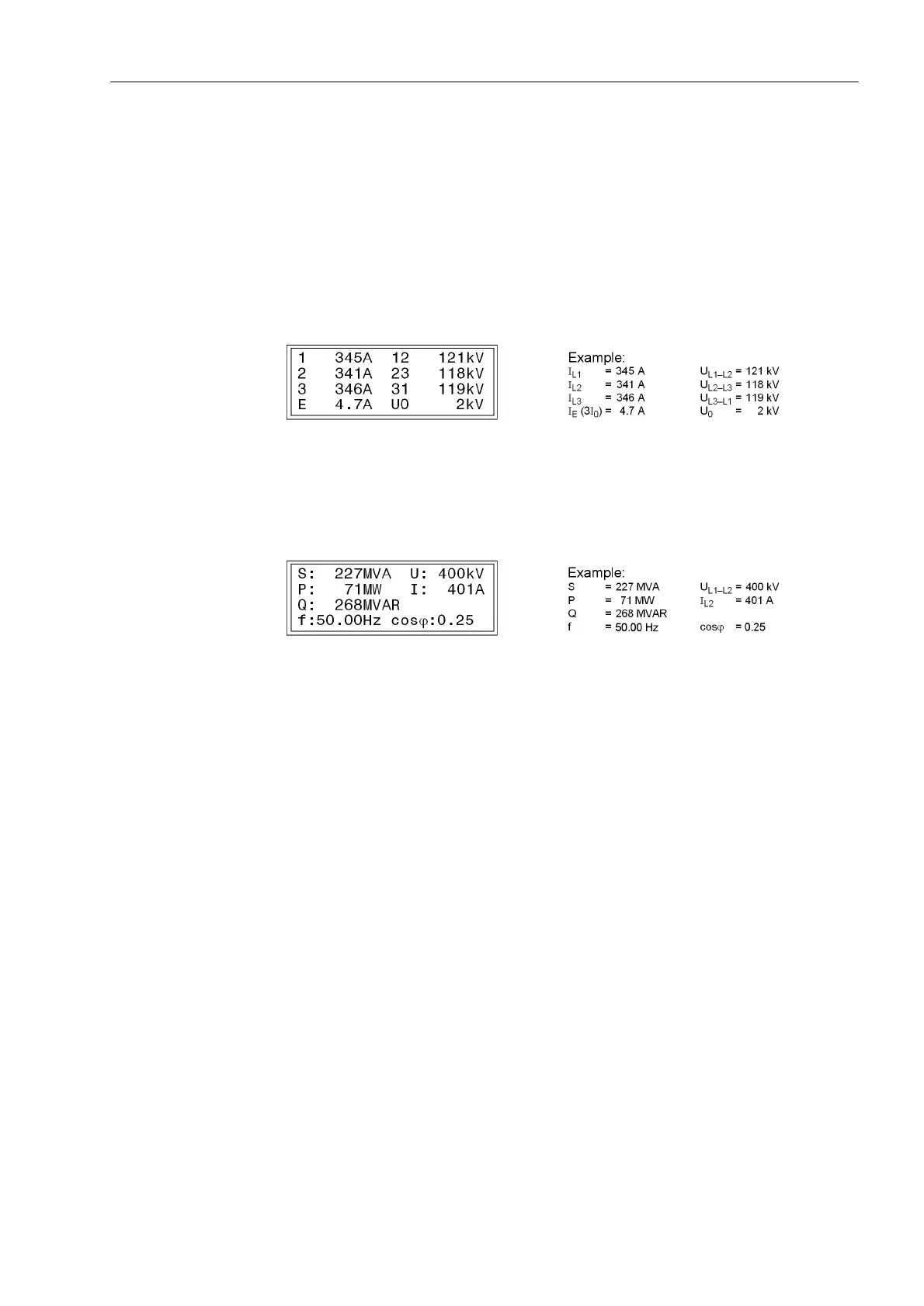2.21 Auxiliary functions
347
7SA522 Manual
C53000-G1176-C155-3
fault display). In the event of a system fault, information regarding the fault, the so-
called spontaneous messages, are displayed instead. After the fault related indica-
tions have been acknowledged, the quiescent data are shown again. Acknowledge-
ment can be performed by pressing the LED buttons on the front panel (see above).
Figure 2-159 shows the default display in a 4-line display as preset.
Various default displays can be selected via the arrow keys. Parameter can be
set to change the presetting for the default display page shown in quiescent state. Two
examples of possible default display selections are given below.
Figure 2-159 Operational measured values in the default display
Default display 3 shows the measured values U
L1-L2
and I
L2
.
Figure 2-160 Operational measured values in the default display
The device in addition has several event buffers for operational messages, switching
statistics, etc., which are saved against loss of auxiliary supply by means of a battery
buffer. These messages can be displayed on the LCD at any time by selection via the
keypad or transferred to a personal computer via the serial service or PC interface.
The retrieval of events/alarms during operation is extensively described in the SIPRO-
TEC
®
4 System Description, order no. E50417-H1176-C151) .
After a fault on the system, for example, important information about the progression
of the fault can be retrieved, such as the pickup of a protective element or the initiation
of a trip signal. The time the initial occurrence of the short-circuit fault occurred is ac-
curately provided via the system clock. The progress of the disturbance is output with
a relative time referred to the instant of fault detection, so that the duration of the fault
until tripping and up to reset of the trip command can be ascertained. The resolution
of the time information is 1ms.
With a PC and the DIGSI
®
protection data processing software it is also possible to
retrieve and display the events with the convenience of visualisation on a monitor and
a menu-guided dialogue. The data may either be printed or stored for evaluation at a
later time and place.
The protection device stores the messages of the last eight system faults; in the event
of a ninth fault, the oldest is erased.
A system fault starts with the recognition of the fault by the fault detection of any pro-
tection function and ends with the reset of the fault detection of the last protection func-
tion or after the expiry of the auto-reclose reclaim time, so that several unsuccessful

